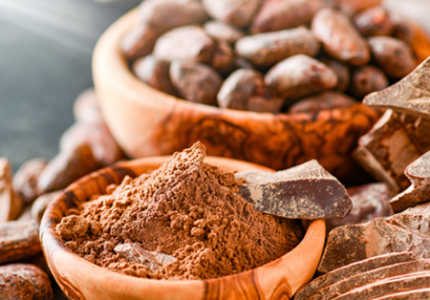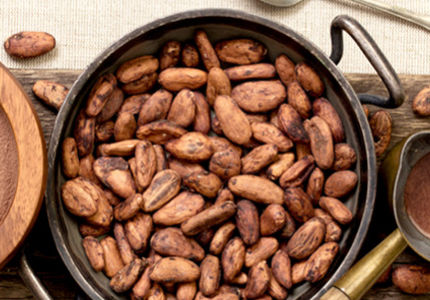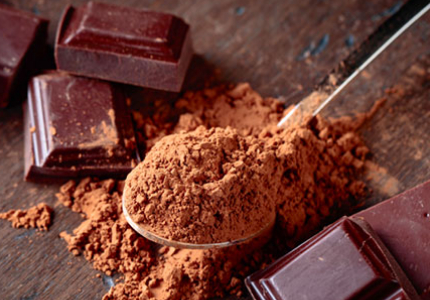Cocoa butter is a special type of fat obtained by pressing cocoa beans. It is mainly produced in tropical regions (primarily in Africa), and appears as a creamy yellow solid at room temperature with a white wax-like appearance and a fragrant aroma. Due to its good flavor, resistance to oxidation, resistance to lipase decomposition, suitable viscosity for chocolate processing, and ease of blending and molding, raw cocoa butter bulk is an essential ingredient in the production of high-quality chocolate. Contact Skyswan for more informations about unrefined raw cocoa butter and deodorized cocoa butter wholesale.
A typical feature of cocoa butter is that nearly 50% of unsaturated oleic acid is distributed on glycerol beta or 2 positions, while saturated palmitic acid and stearic acid are distributed on alpha or 1,3 positions. This distribution provides valuable crystalline forms and solubility for cocoa butter triglycerides, allowing chocolate to melt quickly at body temperature. During the consumption of high-quality chocolate, the cooling effect of the rapid dissolution of chocolate creates a special mouthfeel.
Cocoa butter is a relatively simple fat in terms of its fatty acid composition. Palm acid, stearic acid, and oleic acid account for more than 95% of the total fatty acid content of cocoa butter.
The typical fatty acid composition of West African cocoa butter's fatty acid composition is relatively simple. Not only does cocoa butter have a single triglyceride composition, but the structure of the triglycerides is also special. The triglycerides in cocoa butter mainly include 1,3-dipalmitate-2-oleate glycerol triester (POP), 1,3-disterate-2-oleate glycerol triester (SOS), and 1-palmitate-2-oleate-3-stearate glycerol triester (POS). The fatty acid and triglyceride composition of cocoa butter may vary slightly due to different planting areas and methods.
The unique triglyceride structure and composition of cacao butter give it significant properties that other fats lack. For example, cocoa butter's plasticity range is very narrow, and it has a smooth surface and excellent brittleness at temperatures below its melting point, making it highly shrinkable with good demolding properties without being sticky, soft, or greasy. Its melting point range in the most stable crystal state is between 35-37℃, which means it remains solid under normal room temperature conditions and completely melts once it enters the human body. Due to its unique flavor and melting properties, cocoa butter is an indispensable raw material in the production of chocolate and the main source of its calories.
Cocoa butter undergoes homogenous polymorphic transformation, which requires careful temperature control during the chocolate-making process to achieve the correct crystal form. Improper temperature control can cause the formation of rough crystal forms, affecting the texture and appearance of chocolate (frosting).
Cacao butter for cooking is the ideal and specialized oil for chocolate, possessing almost all the advantages of various plant oils, and there have been no other fats discovered that can compare to it.
Cocoa butter content is a vital indicator for distinguishing the purity of chocolate, and it gives chocolate its rich, strong flavor, a tempting luster, a distinct smoothness and a melting in the mouth sensation, providing people with a wonderful experience.


